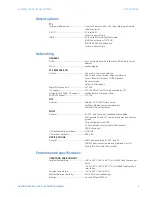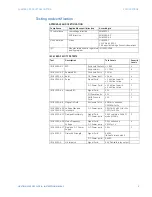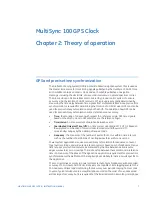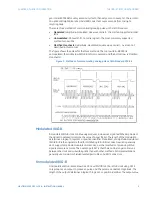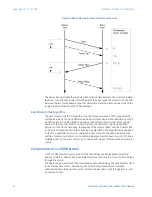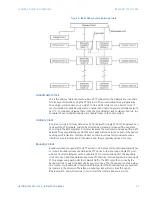
CHAPTER 2: THEORY OF OPERATION
IEEE 1588 / PTP / C37.238
MULTISYNC 100 GPS CLOCK – INSTRUCTION MANUAL
15
Figure 3: IEEE 1588 synchronisation network
Grandmaster Clock
This is the primary reference source within a PTP subdomain, the "ultimate source of time
for clock synchronization using the PTP protocol". The Grandmaster clock will generally
have a high-precision time source, which can be a GPS reference or an Atomic clock. If
synchronization is needed purely within a network and not to any external reference (such
as UTC - Coordinated Universal Time), then the grandmaster clock could also free run. It is
possible to have multiple Grandmaster-capable clocks on the same system.
Ordinary Clock
An ordinary clock is formally defined as a PTP clock with a single PTP port. It operates as a
node within a PTP network, and can be selected as a master or slave within a segment
according to the BMC algorithm. Ordinary clocks are the most common device within a PTP
network. They are generally used as the end nodes within a network as part of the devices
needing synchronization. Ordinary clocks can come in various forms and with various
interfaces to external devices. At the device end, they're typically a slave clock only.
Boundary Clock
Boundary clocks are used within a PTP system to sit in place of standard network switches
or routers. Boundary clocks are defined as PTP clocks "with more than a single PTP port,
with each port providing access to a separate PTP communication path". The boundary
clock acts as an interface between separate PTP domains, intercepting and processing all
PTP messages and passing all other network traffic. The BMC algorithm is used by the
boundary clock to select the best clock any port can see. The chosen port is set as a slave
(to a master or grandmaster clock) and all other ports of the boundary clock are asserted
as masters to their domain. Therefore, a boundary clock will carry time through an
Ethernet switch, and will continue to carry time if the master clock source is lost.



